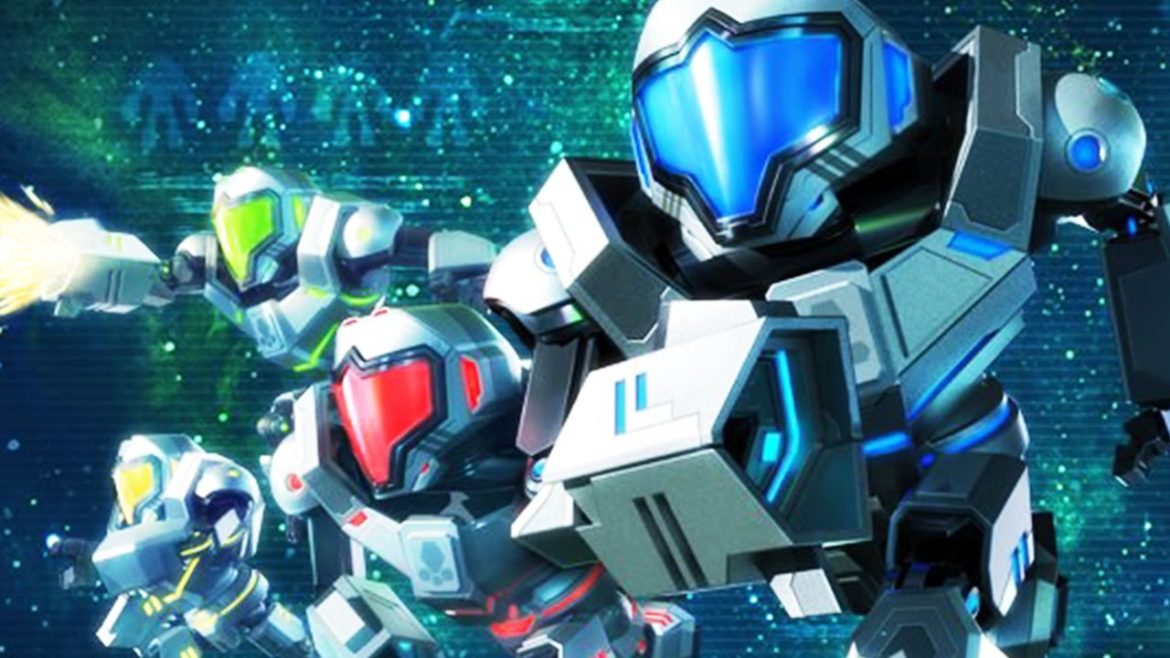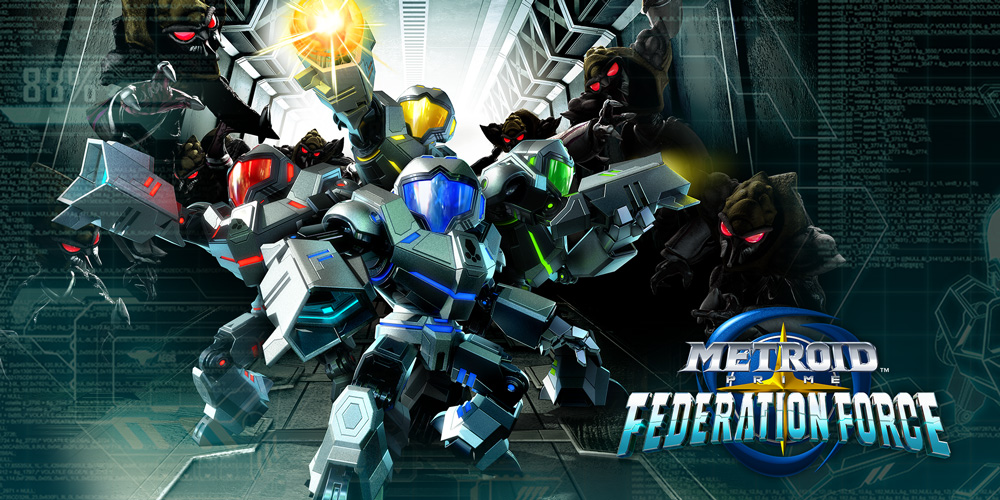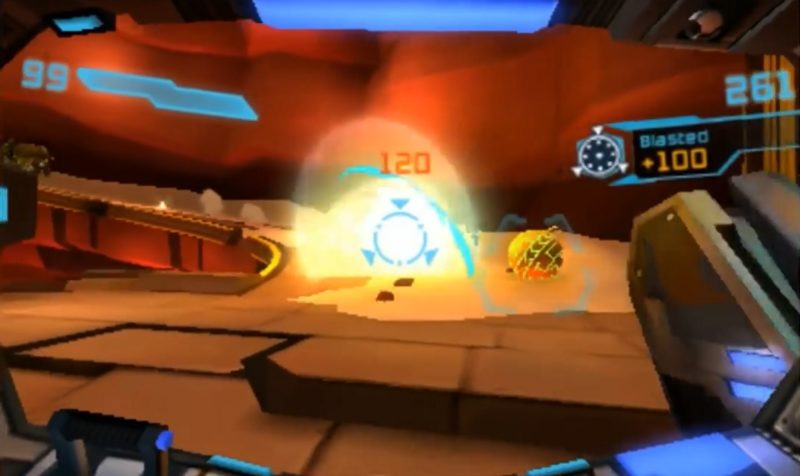TL;DR
Metroid Prime: Federation Force shifts focus from Samus Aran to elite Federation soldiers battling space pirates in mech suits. While it retains some Metroid Prime elements like plasma weaponry and boss fights, it ditches extensive exploration for shorter, action-focused missions. The game suffers from clunky controls, underwhelming graphics and audio, a lack of variety, and frustrating mission restarts without checkpoints. It’s a competent, albeit flawed, spin-off that feels more like a traditional FPS with Metroid vibes than a true Metroid adventure. Dive into the full review to see if this mech-based combat is worth your time.
The last Metroid was in captivity. The galaxy was at peace.
However, this tranquility proves fleeting. New conflicts erupt, and the Federation determines that space pirates will remain a persistent threat. Galactic peace seems unattainable while the pirates operate unchecked. In Metroid Prime: Federation Force, the narrative shifts away from bounty hunter Samus Aran, focusing instead on a squad of elite Federation soldiers. Operation Golem is initiated to combat the space pirates, leveraging special forces and advanced mech suits. Their missions range from investigating distress signals to dismantling pirate infrastructure, and retrieving vital ancient artifacts before they fall into enemy hands.
Despite Samus Aran’s absence, familiar elements from previous Metroid Prime installments are present. Relentless space pirate assaults, plasma weaponry, and other science fiction staples, underground bases and desolate alien landscapes, challenging boss encounters requiring strategic thinking, and environment-based puzzles all contribute to a familiar aesthetic. While superficially similar, the first-person perspective retains a recognizable Metroid feel.
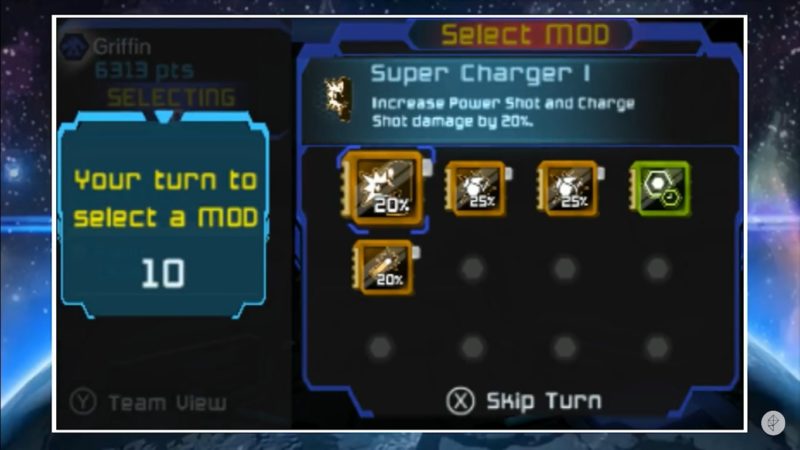
Offensive players can, for example, select the Super Charger for enhanced charged shots, while defensively-minded players might opt for Reinforced Plating to mitigate mech suit damage.
However, the emphasis on exploration and backtracking, hallmarks of the series, is diminished. The game prioritizes action, with gunfights and boss battles, alongside streamlined exploration and puzzles, forming the core gameplay loop within relatively compact levels. Federation Force offers only a superficial engagement with its environments. Extended exploration of Zebes or other planetary interiors is absent; instead, missions emphasize rapid insertion, objective completion, and swift extraction, often under pirate ambush. Whether on the icy planet Excelsion, the ruin-laden Bion, or the biotoxic Talvania, the mission structure remains consistent. Successful completion of these short missions typically takes 15-20 minutes.
Failure, however, introduces frustration. Depleted energy reserves necessitate replaying the entire mission, emphasizing caution and strategic resource management. While levels are brief and energy reserves substantial, preparedness is crucial. Players must carefully select appropriate mods, items found within the levels that grant diverse upgrades. The limited mod capacity of the Mech suit restricts experimentation. When playing solo, the “Lone Wolf” mod, halving damage received and doubling weapon effectiveness, becomes almost mandatory, further limiting customization. In addition to mods, players can equip energy capsules, standard missiles, super missiles, and elemental weaponry. A Samus Aran decoy is also available as a strategic tool. Equipment selection is constrained by weight, with heavier armaments and healing items imposing greater encumbrance, necessitating strategic trade-offs. Ice weapons prove effective on Bion’s scorching terrain, while fire-based missiles excel against Excelsion’s icy denizens.
Missions typically involve landing on a planet and infiltrating a base or ruin, prompted by a signal from an artifact, stranded researchers, or another objective, such as destroying a key facility, followed by a hazardous escape. The structure deviates from the established Metroid formula, bearing a greater resemblance to traditional first-person shooters, albeit with Metroid-inspired elements. Puzzles are often straightforward, especially compared to those found on Bion, while exploration is less emphasized. The level design resembles the semi-linear environments of 1990s FPS titles like Quake, Turok or GoldenEye 007, rather than the open-ended exploration typical of the Metroid series.
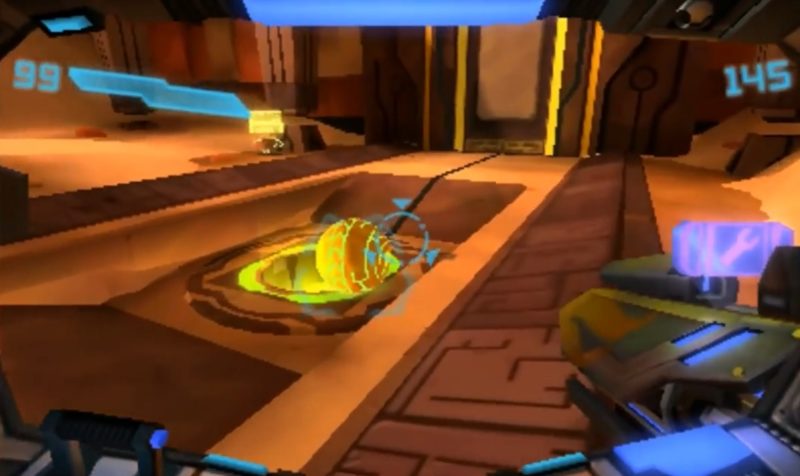
Intergalactic mini-golf on Bion. Project the ball into the designated hole to unlock access to an ancient temple. However, the Federation’s elite forces lack the iconic Morph Ball ability of Samus Aran.
Federation Force is not a conventional Metroid adventure. While it can be enjoyable and atmospheric, evoking a sense of immersion through subtle details and effective ambient music despite inherent limitations, it lacks the exploration of alien ruins and non-linear progression associated with the series’ best entries. This title is more accurately described as a spin-off, a feeling reinforced by Samus Aran’s absence, despite occasional reports referencing her activities.
The concept of exploring the universe from the perspective of ordinary soldiers is compelling, and the execution is adequate. With additional refinement, a larger budget, and a platform more suited than the 3DS, Federation Force could have excelled, despite its departure from the classic Metroid formula. The core issue lies not in the premise, but in several uninspired design choices, levels that are too short and unremarkable, and the limitations of the 3DS as a platform for first-person shooters.

The targeting system locks onto enemies, such as the aggressive space pirate shown here. Holding ‘R’ after locking on with ‘L’ allows for manual aiming adjustments, useful for hitting rapidly moving targets.
The control scheme may be unfamiliar to some players. Federation Force supports dual analog controls on the New Nintendo 3DS and Circle Pad Pro. However, this review assesses the game using the standard Nintendo 3DS controls. As in previous Metroid Prime games, a lock-on system is available, but its range is limited, and it is less effective against agile enemies. Free aiming with a single analog stick involves tilting the entire console, an innovative but somewhat cumbersome approach. The lock-on system simplifies aiming, mitigating the impact of the platform’s limitations. Quick maneuvers are responsive for those familiar with previous Metroid Prime titles. Fine-tuning the lock-on can be achieved by holding ‘R’ and tilting the console, which provides surprising precision. This technique is useful for leading targets.
However, free-look functionality is problematic. To look around, the player must physically rotate the entire console. In addition to potential social awkwardness, this proves impractical.
The analog stick can also be used for turning. This control scheme evokes the Nintendo 64 era, where the stick controlled both forward/backward movement and lateral rotation. Strafing is only possible while locked onto an enemy or by holding ‘R’ to engage free-look, which disables directional movement. These limitations can be problematic during intense boss fights or in confined spaces, where unintended movements can lead to errors. Furthermore, the 3DS’s analog nub is sub-optimal for first-person shooters, resulting in thumb fatigue and reduced sensitivity.
Graphically, the game is underwhelming, resembling a hypothetical Metroid 64, with visual fidelity comparable to Ocarina of Time. Metroid Prime: Federation Force fails to match the graphical quality and level of detail of the original Metroid Prime on the GameCube, a significant disappointment. Expectations for a Metroid title in 2016 are understandably higher. Other 3DS titles such as Animal Crossing, Mario Party, and Fire Emblem may be excused due to their emphasis on concept or charm, but Federation Force, as a new entry in the Metroid series, suffers from angular contours, uninspired textures, and simplistic polygon models. Similarly, the audio suffers; while the music and sound effects are well-composed, the 3DS speaker system does not do them justice.
The unusual proportions of the soldiers and their mech suits also detract from the experience. While primarily viewed from a first-person perspective, the design choice feels incongruous with the otherwise realistic art style. This may be a concession to the platform’s limitations, precluding more detailed and realistic models.
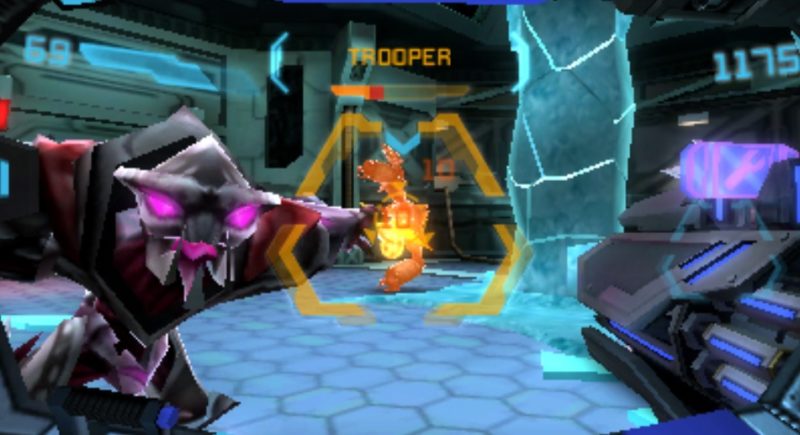
The low-resolution textures, polygon count, and aliased graphics are often more alarming than the space pirates themselves.
The lack of variety is also a drawback. Despite cosmetic differences, the levels are structurally similar, whether exploring lava-filled ruins on Bion, barren landscapes on Excelsion, or factory corridors on Talvania. The differences between environmental hazards are negligible. However, certain missions stand out. One involves infiltrating a factory without the mech suit, relying on stealth tactics to avoid detection. Another task involves luring ice beasts into traps. More such inventive scenarios, instead of the standard formula of infiltration, retrieval/destruction, and ambush, would have enhanced the experience.
Like Triforce Heroes and Ever Oasis, cooperation is a key element, particularly in online play. However, the game is perfectly playable solo, and the puzzles are less reliant on teamwork than those in Triforce Heroes. Cooperative combat against bosses and pirates is more engaging, but it is recommended to first complete levels independently before seeking faster times and medals. Achieving extra goals unlocks further Mech modifications. Learning the levels at one’s own pace is more rewarding than rushing through them with speedrunners, especially those already familiar with mod locations. Communication is limited to preset phrases, hindering detailed coordination. These limitations may be a response to concerns about online harassment. Players seeking uninhibited communication can explore alternative solutions or play via local network.
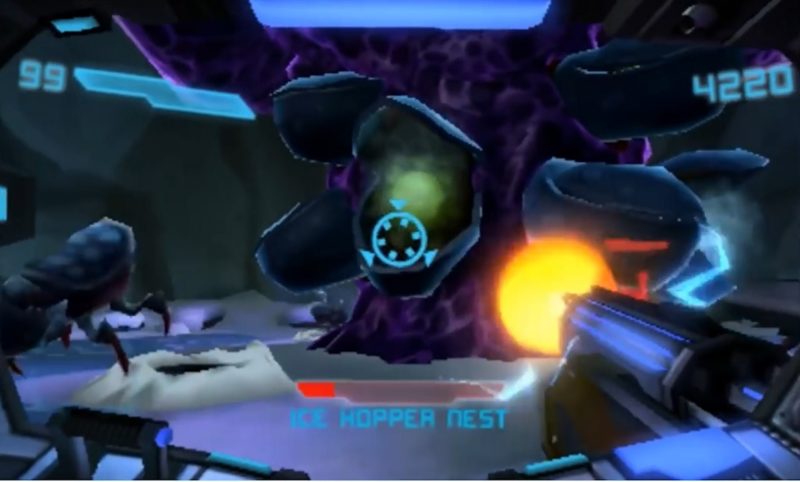
One of the early bosses. Its weak points are relatively obvious. Aim, charge, and target the core when the protective shells open.
Next Level Games has delivered a competent effort with Metroid Prime: Federation Force, given the available resources. The game is engaging for a 3DS action title, and the 3D effects, though occasionally headache-inducing, are not entirely superfluous. Federation Force has faced considerable criticism, some of it unwarranted. While a Metroid title without Samus Aran, emphasizing action, shorter levels, and mech suits may not appeal to purists, it is a reasonably enjoyable spin-off, suitable for short bursts of gameplay on a portable platform.
While it would be easy to condemn Federation Force for deviating from the established formula, it could have been a worthwhile addition to the Metroid universe. However, significant shortcomings in control, graphics, audio, and gameplay must be considered. The lack of checkpoints, frustrating level replays, and the unusual character proportions detract from the overall experience. Had these issues been addressed, Federation Force could have aspired to a higher rating. As it stands, it is a passable game, hampered by limitations, predictability, and a lack of variety. The levels are often formulaic, the atmosphere is fleeting, and the motion-based aiming, while innovative, is not fully realized.
I would have preferred to rate Federation Force higher, acknowledging its ambitions, potential, and the unfair pre-release condemnation. However, it ultimately falls short. Sparse glimpses of Samus Aran’s activities and a foundation for a more compelling game are present, alongside clever puzzles, memorable boss fights, and standout levels. Ultimately, the game is incomplete, preventing me from awarding it a more favorable rating.
